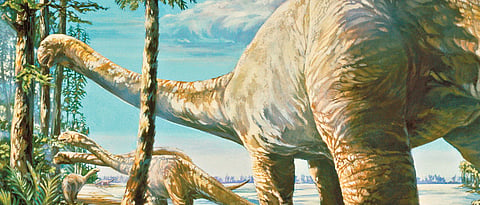

Pune: We all know that dinosaurs, which once existed on the Earth, vanished after an asteroid fell. What many of us do not know was the fact that it was the fifth extinction on the Earth when 90 per cent living and other things just vanished and happened 5 million years ago.
Although extinction was not a new phenomenon on Earth, the unfortunate thing is that the ‘sixth extinction’, which has been predicted in the near future by environment scientists and research communities, would be man-made.
The United Nations’ recent landmark new report from the Intergovernmental Science-Policy Platform on Biodiversity and Ecosystem Services (IPBES), the summary of which was approved at the 7th session of the IPBES Plenary meeting last week (April 29- May 4) in Paris, mentions that the overwhelming evidence of the IPBES Global Assessment, from a wide range of different fields of knowledge, presents an ominous picture.
IPBES Chair Sir Robert Watson said, “The health of ecosystems on which we and all other species depend is deteriorating more rapidly than ever.”
“We are eroding the very foundations of our economies, livelihoods, food security, health and quality of life worldwide,” Watson said.
When Sakal Times asked environmental scientist and zoologist Hemant Ghate about it, he said, “It is sad but true. And it is accelerating at a very fast pace and we will witness the beginning of the extinction between 2025-2050. Despite environmental scientists telling the governments regarding the deteriorating of nature, none took the necessary action required for improving the quality.”
He said that three important factors are vividly responsible for it - habitat destruction, overexploitation and the introduction of exotic and foreign animal and plants. One of the worst reasons for the degradation of the environment is the destruction or alteration of the habitat.
Giving an example of the destruction of habitats, he said, the Indian rhinos, which once had lived from the Himalayas till Sumatra or Java island, have now gotten only limited to four per cent of land in the Himalayas. Rest of its habitat has been either destructed or altered over the years, he said.
“Same was the case with the Savitribai Phule Pune University (SPPU), where natural vegetation gave way to the decorative plants. This affected the insects’ population, which in turn, affected the birds that fed on them,” he said. The UN report also mentions that around 1 million animal and plant species are now threatened with extinction, more than ever before in human history.
Elaborating on overexploitation, Ghate said, “In the name of medicinal plants, the destruction we are causing is huge. For example, in countries like Japan and Russia, the Blue Whale has been their traditional delicacy and thus, they refuse to stop hunting them. Unfortunately, the Blue Whale population has been declining on a faster rate.”
Likewise, the introduction of foreign species here has also caused unrest among the animal and plant kingdom. Cactus and congress grass are foreign species which are eating out on the native species. The Tilapia fish, which can be found in the southern part of the country, is actually a foreign species, he said. Nevertheless, now at least, it is the time to modify our lifestyle to save the green earth, he said.
Highlights of the report
